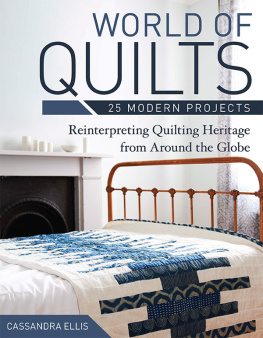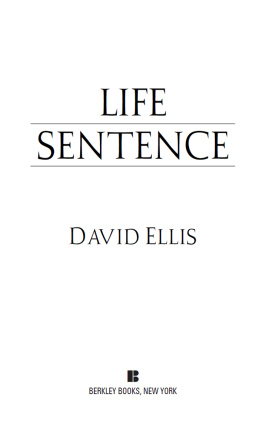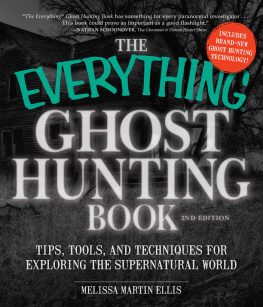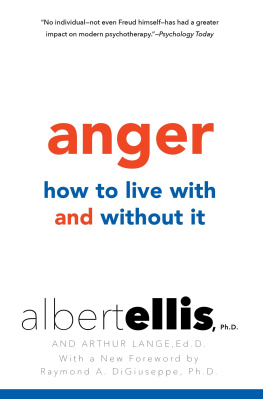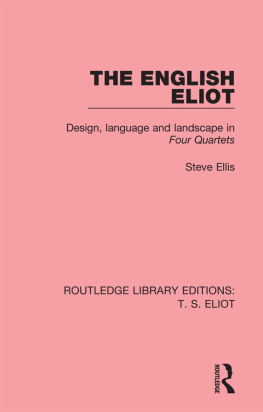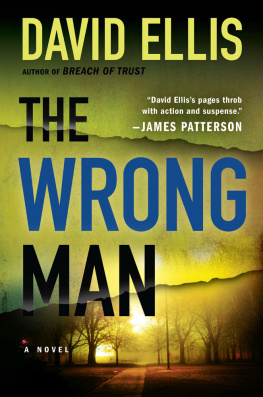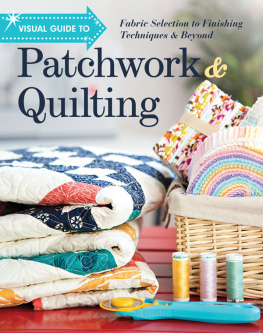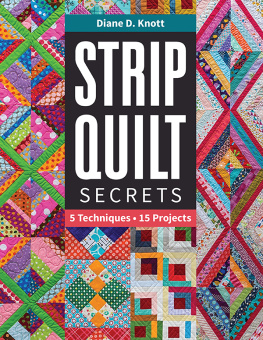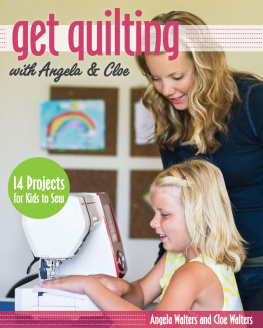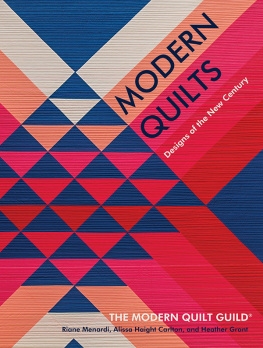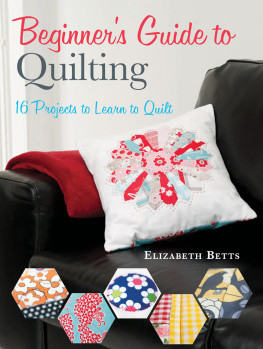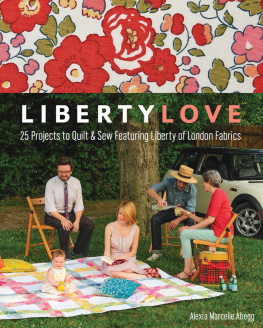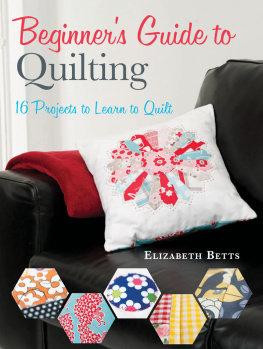Publisher: Jacqui Small
Managing Editor: Lydia Halliday
Senior Editor: Claire Chandler
Senior Project Editor: Zia Mattocks
Art Director: Kirsten Willey
Creative Concept and Styling: Cassandra Ellis
Production: Maeve Healy
Illustrations: Sarah Rock
Additional photography:
Debi Treloar and Michael Wicks
Cover photogrpahy: Debi Treloar
Jacket design: April Mostek
INTRODUCTION
I AM A SELF-TAUGHT QUILTER. I have always known how to sew and make (and improvise). I understand what fabric is and the inherent qualities of each type, and I am good at math. I have always been fairly obsessed about the idea of home and how people live. I used to own a homewares store where we designed and made all of our goods, and it was while searching for a quilt I would want to make and sell that everything collided. I realized that quilts wereand still could bethe absolute summation of homes, families, communities, and individuals. They were practical and very personal, which meant they became completely precious to the individual and family. Quilts represented both the makers creativity and their familys history. As well as a means to provide warmth, quilts could be the ultimate storytellers.
My passion for quilts was fuelled as I began working out how they were madeI needed to understand the practical element so that, once that knowledge was safely absorbed, I could happily move on to the anthropological elements that add the magic ingredient. I looked at many books and visited galleries and historic houses to find and understand the quilts that I loved. I was as emotionally moved by the quilts of Gees Bend in Alabama as by the simple beauty of Welsh Wholecloth quilts. I rummaged through many Indian Kantha quilts and got terribly excited by the Pojagi quilts from Korea. These quilts were obviously technically brilliant but also spirited and uplifting. The quilt books I read were not technical books, but books based on the history of quilts and their makerscovering both anthropology and design. I also devoured books on fashion design and construction, as well as books on sociology and art, because they all seemed relevant to the quilts I wanted to make.
This desire to understand the maker still excites me when designing and making quilts or teaching others. I love that I can see the hand of the maker and understand history, culture, and political movements through the women (and men) who made the quilts. I am more interested in someones choice of color palette than his or her stitching prowess. I have seen quilts of aching beauty made from little more than scraps, and many more wonky quilts that are truly moving.
Most of these makers were also self-taught; they relied on their intuition and personal creativity to produce quilts that performed the essential duty of keeping their families warm. The quilts they made were also works of great beauty and represented a time and place where communities were built and friendships were formed. These groups shared techniques and styles with each other, and, as they moved around the world, their quilt designs continued to adjust and change.
Many quilts were created by women who lived through extreme hardship, sometimes poverty and isolation of every kind. New beginnings and old limitations have resulted in quilts of breathtaking beauty. Their quilts defined them as a tribe within a period in history and gave them a voice when they had no voice of their own. Function may have been the key motivator, but they allowed the women to communicate their individual creativity and values. Some of these quilts have now been elevated to pieces of art, but their reason for existence was always about need. Their families needed shelter and comfort, and this is what I find most compelling and poignant about quilts. Find a story and a quilt that move you. Do not fret over your stitching skills or be anxious about your choice of fabric. Most of all, dont give a moments thought to whether you feel you are creative. Just make.
I like to think this book is an encouraging and uplifting entry into the world of quilting. There are 25 different designs based on the quilts I love, from around the globe. Between them they will teach you many skills, but also help you to create the quilt you would like to make. Adapt them to suit your own requirements and aesthetic desire. Revel in your style of making, but be buoyed by the knowledge you have gained. It is a good idea to read the Quilt Masterclass (see ) first, as I think it may demystify what a quilt is and help you plan what you want to make and how to go about it. All you need are the tools and an understanding of the glorious craftsmanship of quilt-making, and you are ready to create something practical, incredibly personal, and extremely precious.


For me, quilts have always been about peopletheir lives, their families and their personal environment.

POSTAGE STAMP
DO YOU REMEMBER the first time you made something with fabric, a needle, and thread? Did your mother or grandmother teach you, or your teacher or older sister? Oh, the thrill of the first few stitches and, then, the amazing realization that you could actually make something. We, like hundreds of thousands of girls before us, have learned to piece squares together using a needle and thread. We discovered that our hands could make and that we could be creative. Perhaps it came to nothing, or perhaps that first foray turned into your first quilt.
Throughout history, Postage Stamp quilts were created as a way of using up scraps of fabric left over from other projects or worn-out clothes. The first quilts werent always made from squaresany size or shape of patch would do because using every scrap of cloth was important. Squares, however, are the simplest shape to sew with, which made them a perfect tool for teaching girls essential sewing skills. There are many definitions of a true Postage Stamp quilt. Some people are sticklers for 1in squares; others say any small size is fine. I err on the side of the second option, as I think the making is more important than the precision of size.
The repetitive nature of the design meant that these quilts could be sewn with little concentrationimportant when the mind needed to be quelled. During periods of war, women would often work on these quilts to help pass the time and distract their thoughtshence, they are often known as worry quilts.
The Postage Stamp quilt is extremely portable, and small sections could be worked on in any free moment. They were often pieced with no set pattern, if they were to be used as simple utilitarian quilts. However, Postage Stamp quilts also became a source of great competition, as makers sought to demonstrate their stitching prowess, and many designs and patterns evolved over the years.
I made a Postage Stamp blanket as a child, and the simplicity of it captured my heart. They were happy days of making my small scrappy blanket and then wrapping my doll or my dog in itand that is a lovely memory to hold on to.
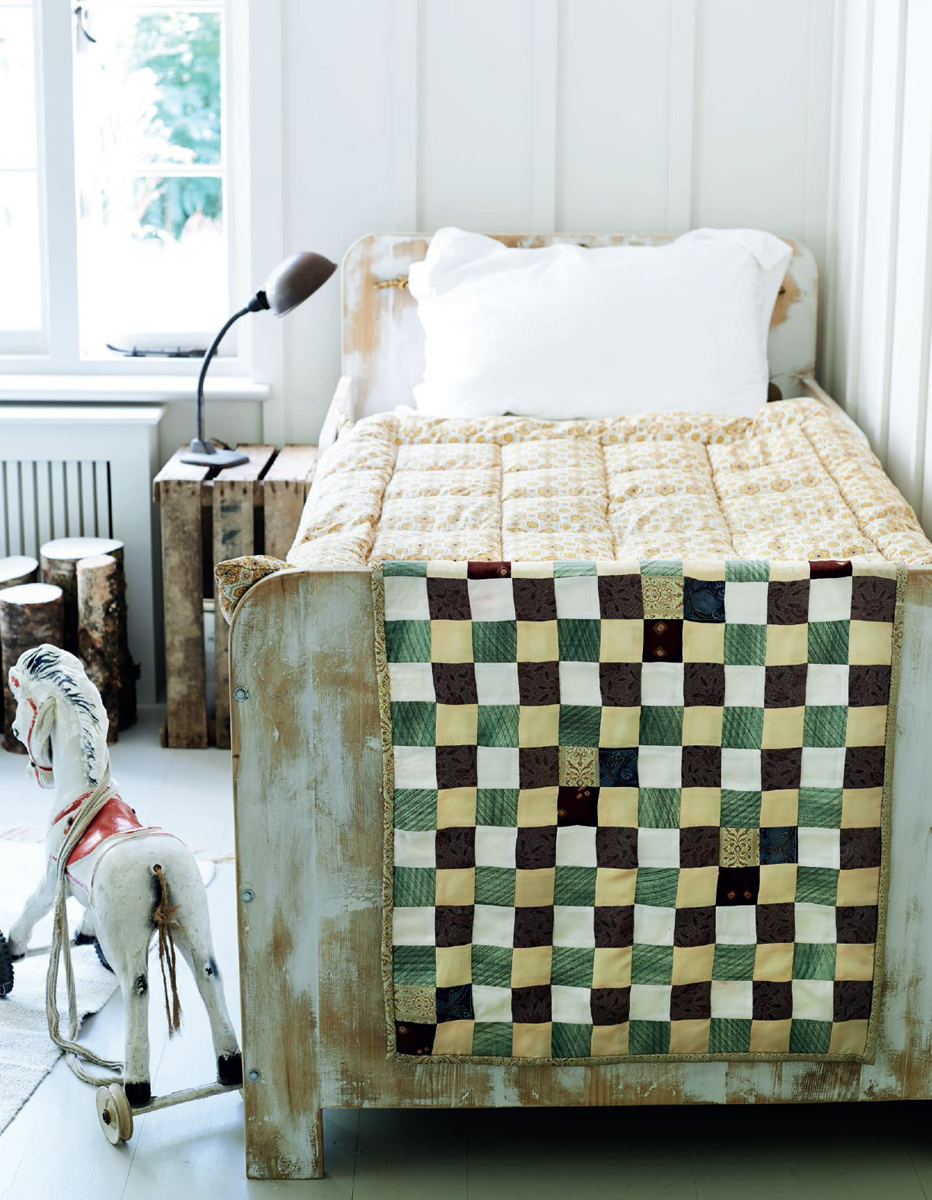
QUILT SIZE
24 x 28in when trimmed and bound. All seam allowances are in and are already built into the cutting sizes.
QUILT TOP
Next page
